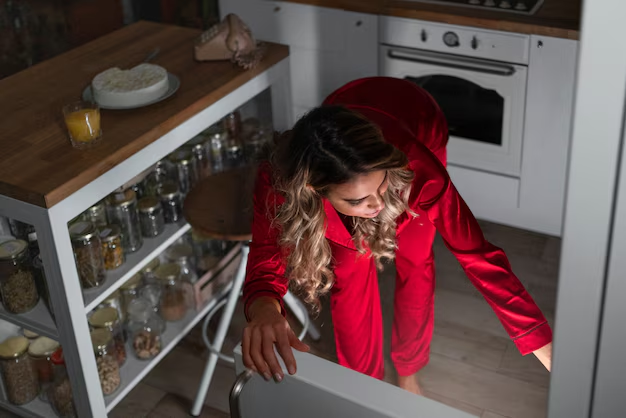Setting the Perfect Temperature for Your Refrigerator and Freezer: Key Insights and Practical Tips
Have you ever opened your refrigerator, only to find your vegetables wilted and dairy products spoiling faster than expected? Or discovered your ice cream is more of a chilly soup than a frosty delight? These common frustrations can often be traced back to incorrect temperature settings in your refrigerator and freezer. Maintaining the ideal temperature not only helps keep your food fresh but also ensures your appliance runs efficiently. In this guide, we'll explore recommended temperature settings, why they matter, and how slight adjustments can make a big difference in your kitchen.
Why Temperature Matters: The Science Behind Refrigeration
In simplest terms, refrigeration slows the growth of bacteria and molds that cause food to spoil. By maintaining specific temperatures, refrigerators and freezers can significantly extend the shelf life of perishable goods. Optimal temperatures can prevent foodborne illnesses and reduce waste from spoiled foods, ultimately saving you money and improving safety in your home.
Bacteria multiply rapidly at temperatures above 40°F (4°C), while freezing below 0°F (-18°C) stops most bacterial activity. Thus, knowing the appropriate settings becomes crucial to food preservation.
Optimal Temperature Settings
📦 The Refrigerator
Ideal Temperature Range:
Refrigerators should be kept between 35°F (1.7°C) and 38°F (3.3°C). This range is cold enough to prevent most bacteria from multiplying, yet not so cold that it harms your fresh produce.
🌿 Consider Fridge Zones
Each zone within your fridge serves a different purpose. Place delicate and highly perishable items, like dairy and leftovers, on the coldest shelves (typically closer to the bottom or the back), while vegetables often fare better in slightly warmer, higher-positioned crisper drawers.
❄️ The Freezer
Ideal Temperature:
Freezers should stay around 0°F (-18°C). This setting preserves the taste, texture, and color of foods for longer periods.
Storing for Success
To maximize space and efficiency, avoid overpacking the freezer. Allowing air to circulate helps maintain the correct temperature throughout the compartment.
Tips for Ensuring Accurate Temperature
Check Your Settings: Regularly verify the settings on your refrigerator and freezer. Some models may have fluctuating settings due to things like door openings and ambient temperature changes.
Use a Thermometer: While most modern appliances come with built-in thermometers, it's advisable to use a separate thermometer for accuracy. Place it in a visible spot in the fridge and freezer to easily monitor the temperature.
Avoid Overloading: Air circulation can be compromised if your refrigerator or freezer is too full. Arrange items to create uniform airflow, like leaving space between products and avoiding stacking items too high.
Seal the Doors Tight: Ensure seals around doors are airtight to prevent cold air from escaping. A quick test with a piece of paper can determine if the seal is tight enough—if you can easily pull it out when the door is closed, you might need a new seal.
Beyond the Basics: Troubleshooting Temperature Problems
Sometimes, keeping to the recommended settings isn't enough. Here are a few common issues and how to address them:
👷♂️ Appliance Efficiency
An overworked appliance may not maintain its settings. Consider inspecting and cleaning your refrigerator's coils and fans regularly to improve efficiency.
Location and Positioning
If your refrigerator is near a heat source like an oven, or receives direct sunlight, it might struggle to keep things cool. Adjust the positioning if possible, or compensate by slightly lowering the temperature setting.
Power Outages
After a power outage, it's vital to check the temperature immediately once electricity is restored. If the temperature rose above the recommended range for several hours, evaluate your food before consumption as it may be unsafe.
Practical Consumer Tips: How to Monitor and Adjust Temperatures
📌 Quick Temperature Check Tips:
- Daily Check: Notice the general performance of your fridge and freezer during regular use; unexpected changes might hint at a problem.
- Monthly Calibration: Use standalone thermometers to double-check your appliance’s built-in ones for accuracy.
- Seasonal Settings: Adjust temperatures slightly in response to outdoor temperature changes, particularly during peak summer and winter.
Cheat Sheet: Optimal Temperature Settings
| Setting | Ideal Temperature |
|---|---|
| Refrigerator | 35°F to 38°F (1.7°C to 3.3°C) |
| Freezer | 0°F (-18°C) |
Common Fixes for Cold Problems:
- 🔄 Rotate Stock: Place older contents at the front to ensure they get used first, avoiding wastage.
- 🧊 Defrost Regularly: If ice buildup is an issue, ensure your defrost function is working, as a buildup can raise temperatures.
- 🌬️ Airflow Matters: Keep vents clear by not covering them with large items or improper storage.
Long-Term Considerations
Optimizing your appliance's settings is just one piece of the puzzle. Considering the health of your refrigerator over the long term is just as essential. Regular maintenance, such as coil cleaning and inspecting door seals, can dramatically enhance performance and longevity.
Additionally, as appliances age, they may inherently become less efficient. It's worth considering upgrading to a model designed with modern, energy-efficient technologies if you notice persistent inefficiencies despite troubleshooting.
Final Thoughts: A Balanced Approach
Staying mindful of your refrigerator and freezer temperatures can dramatically affect food safety, utility bills, and meal planning. By understanding and acting on the ideal temperature guidelines, you're poised for fewer spoiled groceries and greater peace of mind. With this knowledge, you can confidently navigate the complexities of maintaining optimal cold in your kitchen, ensuring both freshness and efficiency are top priorities. ✨
Remember, keeping tabs on these settings isn't about paranoia—it's about maximizing the potential of your appliance and maintaining quality in your kitchen.
So, the next time you enjoy a fresh, crisp salad or perfectly frozen scoop of ice cream, you'll know the not-so-secret ingredient: the right temperature settings! 🥗🍦
